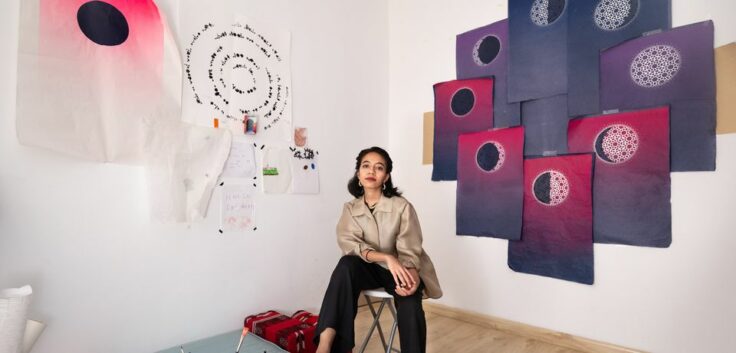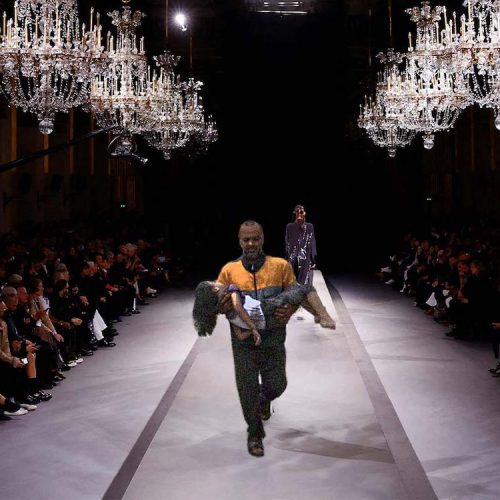Although proudly self-taught, Saudi Arabian artist Basmah Felemban has made it big in the international contemporary art world. In 2012 her very first work Jeem made its debut at the British Museum as part of the exhibition Journey to the Heart of Islam, a huge accolade for an emerging artist fresh out of high school, firmly cementing her place in the industry.
Since then, Felemban has not only completed a masters in Islamic and Traditional Art in London, but has also exhibited her work at numerous contemporary art institutions including Art Dubai, 21/39, Contemporary Art Istanbul, Venice Biennale, and Art Abu Dhabi.
In 2014 she won The Arab Women Awards in the Young Talent category, and was invited to be on the judging panel the following year. Her prestige was showcased this year, as she was one of 11 of Saudi’s top contemporary artists to be exhibited at Zamakan at the King Abdulaziz Center for World Culture in Ithra.
Realising her potential to inspire others as a young Saudi artist, Felemban now leads workshops and small start-ups to support the Kingdom’s burgeoning creative scene and also encourage young women from Saudi to aim for fame on an international scale.
One of her biggest projects to date was Saudi Street Art, an online platform where young people were encouraged to express their art in public spaces and in an authentic environment, with the option to anonymize their identity.
Felemban’s work ranges from sculpture and installation, to graphic design and is largely inspired by Islamic calligraphy (Boullata style). Her work gives the script a new artistic and graphic topography, which is then printed on materials such as silkscreen, laser-cut plexiglass and brass.

This year, Felemban was one of three artists chosen to participate for Saudi Arabia in Bienalsur, the world’s first travelling contemporary art biennale, which is exhibiting in over 100 international locations from June to October this year.
Whilst her work is regularly exhibited on the global circuit, Felemban always returns to her Muslim identity, figuring in large-scale installation pieces such as The Journey from Creatures to God, where laser engraved on copper plywood with gilded embellishments featured a rotating mechanism, which not only has artistic merit but is based on Ibn Arab’s twelfth century text The Bezels of Wisdom, in which each chapter rotates around a jewel which brings the reader closer to becoming a celestial body.









